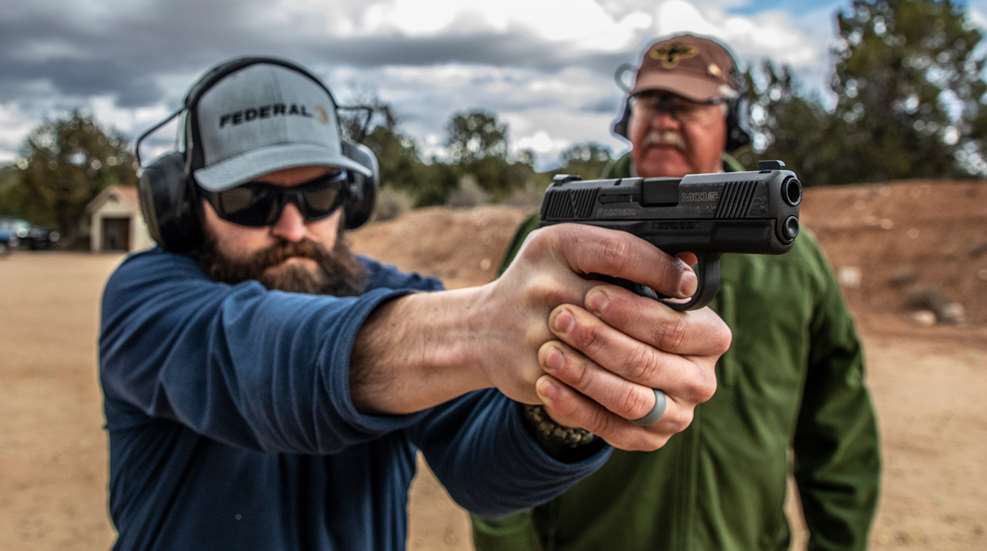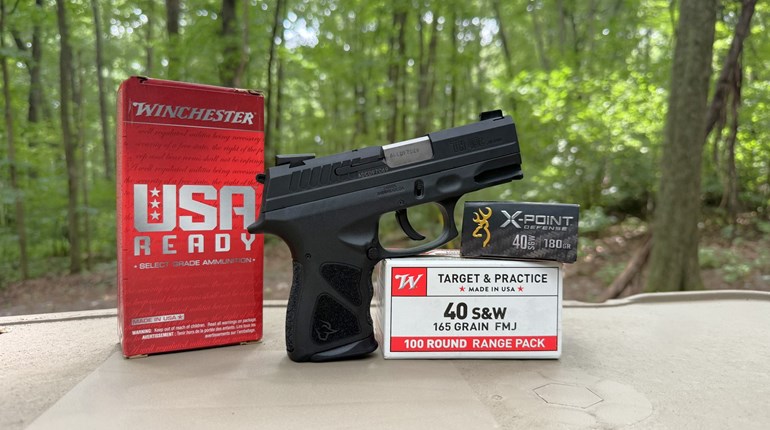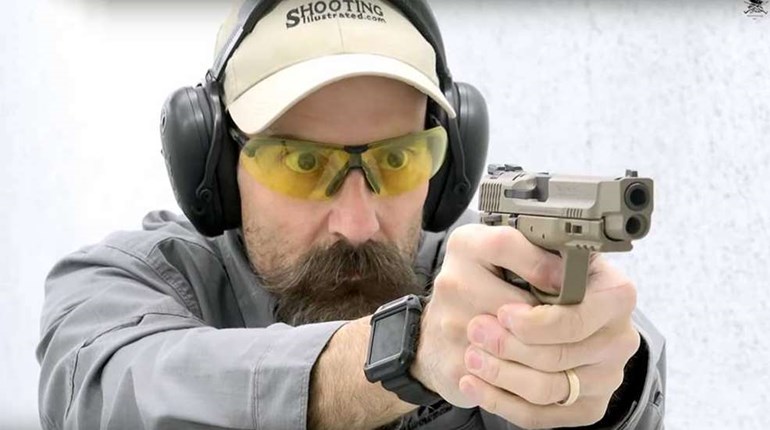
Undoubtedly, the most important aspect of any performance shooting regardless of application (combat or competition) is how well you grip the gun. Multiple world champion and Grandmaster Rob Leatham offers his disciples the critical admonition: “Nothing is more conducive to inaccuracy and poor control than changing grip pressure.”
Tier one government asset (T1G), grandmaster performance shooter and master instructor Matt Pranka (Xray Alpha) uses the word “durability” in reference to maintaining consistent grip pressure and not changing grip position in any way throughout the shooting process.
Many other grandmaster and master-level shooters offer the same advice to many seeking to uplevel their shooting skills. However, is that all there is to it? Just don’t change your grip pressure? Let’s take a closer look down the durable grip rabbit hole.
Combining various grip durability recommendations of the grandmasters, the idea is to first establish your signature grip on the gun and once that is established don’t change it. Practical application compels us to analyze the three most common applications of maintaining a durable grip: presentation (handgun draw), splits (multiple hits on the same target), and transitions (landing hits on multiple targets between breaking each shot).
During Presentations
Drawing the handgun from the holster whether outside or inside the waistband regardless of carry position starts with establishing a master grip with the strong hand.
The initial strong hand-only grip is established with the pistol while still in the holster. The strong hand must make positive contact hitting all the usual waypoints such as the web between the thumb and forefinger placed firmly and up high on the bore line, maximum surface contact (more contact equals more control), backstrap well-seated in the meat of palm, trigger finger outside and alongside the outside of the holster and so on.
Few shooters think about it after the initial grasp, but once you’ve established that master grip with your strong hand, then the price tag for changing its position or pressure even a little bit during the fire control process is either inaccuracy or poor control.
Next step in the process is moving to a two-handed grip (both hands, strong plus support hand or ‘freestyle’) is the linking of the support hand with the strong hand in such a manner as to weld the two grips as one.
The support hand grip should be firm enough to do its job – which is to support the master grip with greater stability than can be created by firing from a single-hand-only grip and is why they call it the support hand. Allow your support hand to do its job, (increase stability), and allow the strong hand to do its job which is to fire the gun.
In review of the presentation (handgun draw) there are two grips, the master grip (strong hand only) and the weld grip (support hand linked to strong hand). Both grips, once established, must not shift in either position or in grip pressure throughout the draw stroke all the way through and while breaking the shot.
During Splits
When firing more than one round at the visual center of the intended target there are three types of shots you may encounter.
One is up close or a very large target surface area, the next is a challenging distance or a smaller target and the third is a very high degree of difficulty based on distance, size, mobility or the cost of missing.
When slow firing at a closer and bigger target the more you can get away with a loose or sloppy grip, but add speed to the equation and/or target difficulty and grip slop will no longer serve you. The greater the performance demand the more durability is required of your grip.
Take running a Bill Drill for example, from the ten-yard line (6 rounds from the holster in less than 2 seconds clean), you need a durable grip.
It doesn’t matter who you are or what skill level you are at, any changes in grip whatsoever at that distance at those accelerated speeds for multiple rounds on the same target, (your split times in between those shots possibly would need to be at or below .20 seconds with about a 1.0 second draw), will result in failure.
During Transitions
The most common error most shooters make in transitioning between targets is to slightly loosen their grip pressure for the alleged purpose of being “lighter” or “faster” in rapid transit across the dead space (non-shooting time) between targets.
However, shooting masters tell us to maintain the same grip position and pressure throughout the shooting process from start to finish. When fighting tooth and nail to save 100ths of a second while avoiding under-travel and over-travel, it’s much easier said than done.
At the end of the day the “A” answer is make and keep a durable grip throughout the entire shooting process from the very start and all the way through to the very end of it. Even at that, most in the know will tell you to sustain grip durability even after your last shot to ensure optimal post-ignition fire control.





































